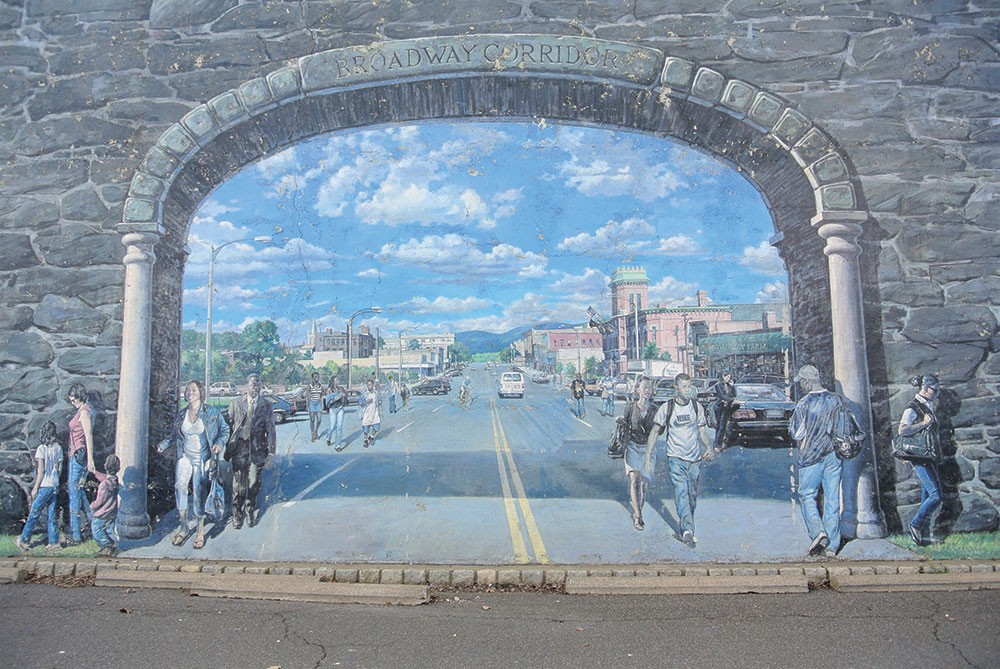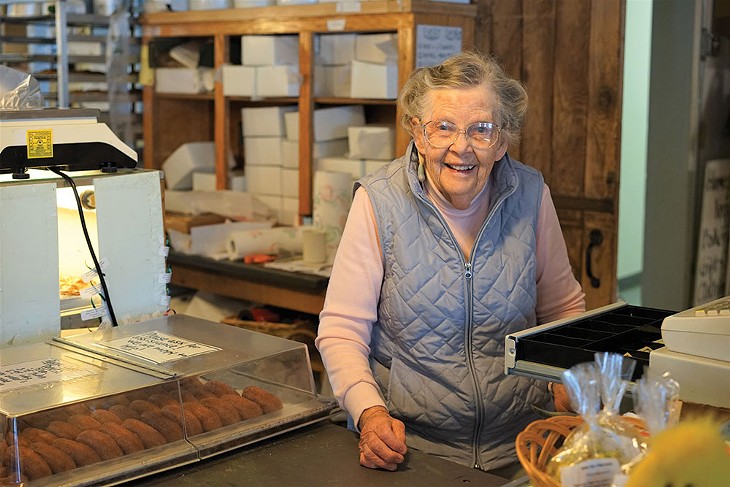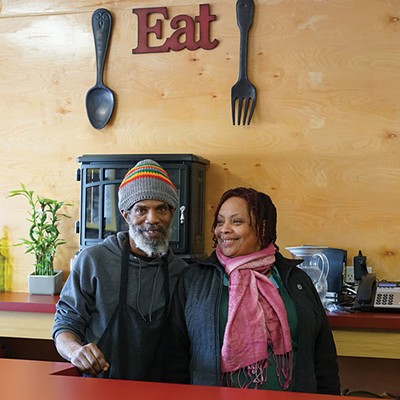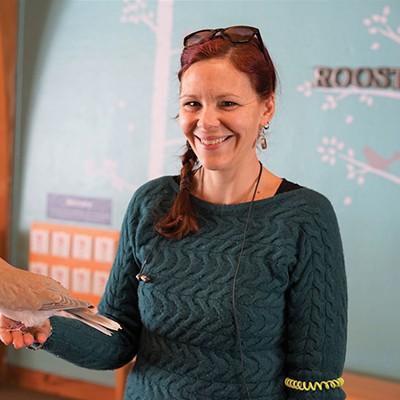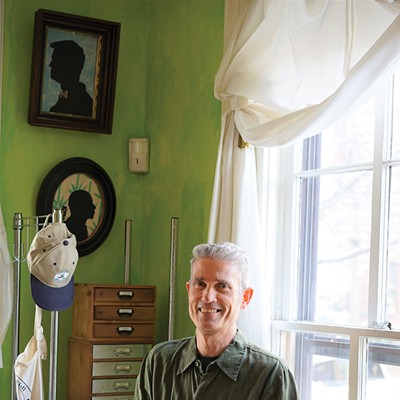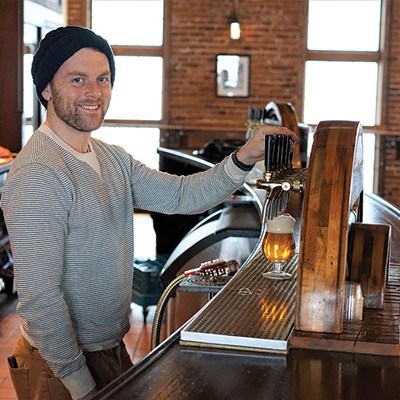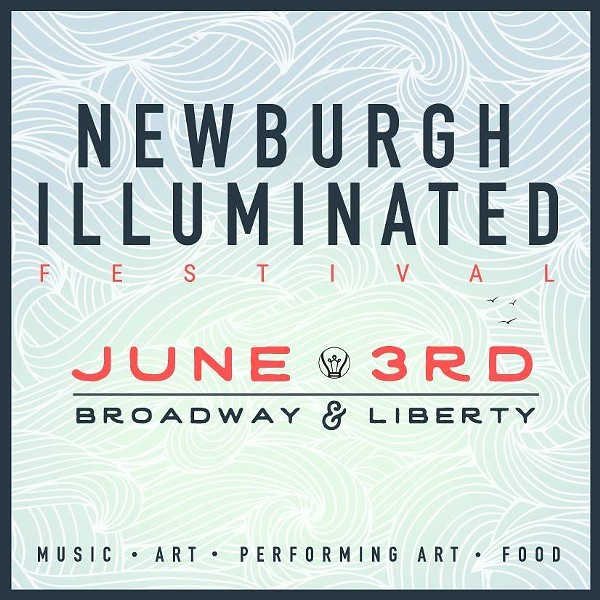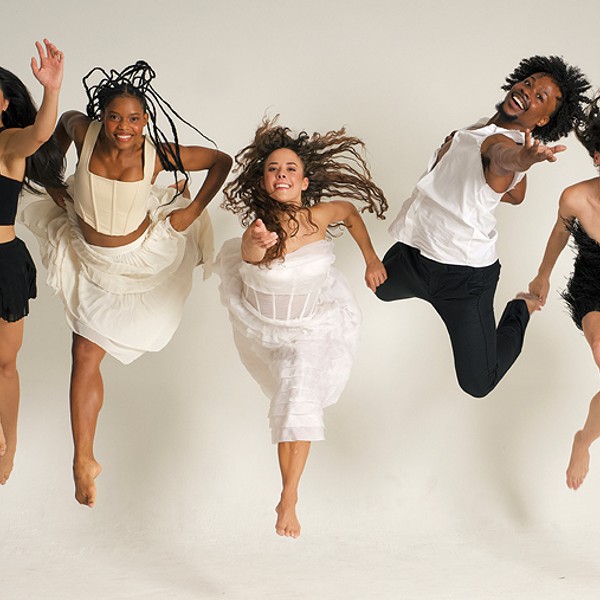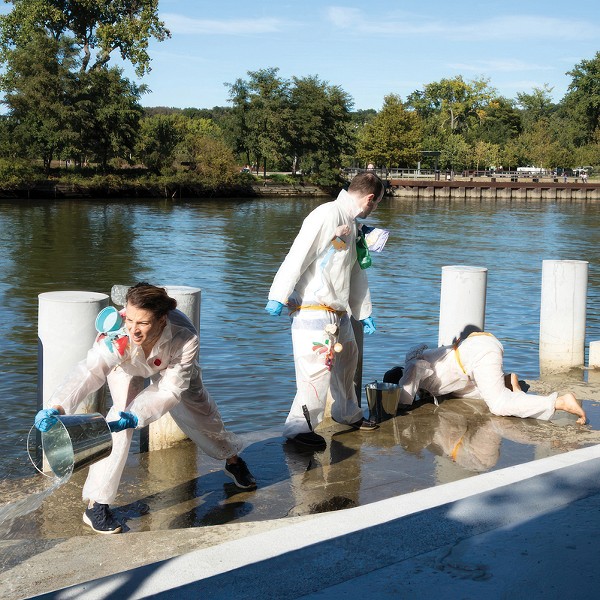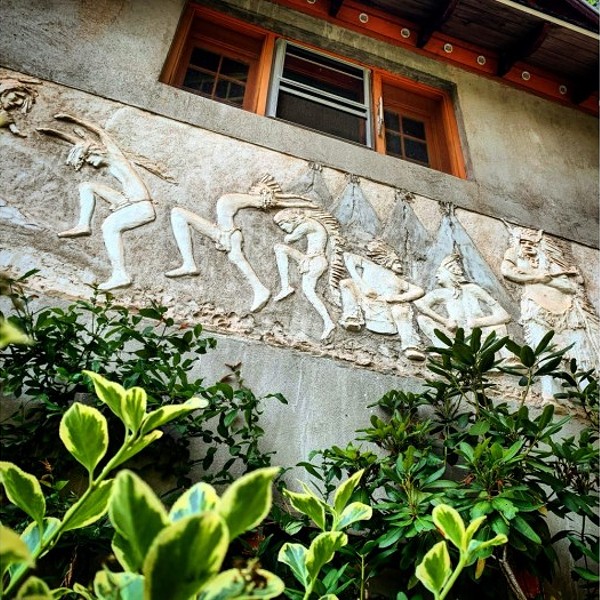It's been more than four centuries since Henry Hudson sailed up the Hudson River, his chronicler declaring the present-day city of Newburgh to be "a very pleasant place to build a town." Some historians have deduced that this proclamation may have instead applied to where the Village of Cornwall-on-Hudson, in the bucolic Town of Cornwall, now stands, just a bit further south. Either way, he was right, with both historic waterfront communities—each boasting a pleasing, river-meets-mountain aesthetic—proving to be fruitful settlements indeed, despite following courses toward two strikingly different manifestations in the centuries to come.
Perched along the western banks of the Hudson, Newburgh and Cornwall fall within the northeastern section of Orange County, both very much part of the Hudson Valley but distinctly flavored by their proximity to New York, which, set within a 60-mile radius, counts them as part of the greater New York Metropolitan area. Despite there being just over five miles separating Cornwall's core from Newburgh's city center, the two have emerged as a study in contrasts: Newburgh is decidedly urban, oozing raw potential and innovation despite its inner-city obstacles, while Cornwall has embraced its pastoral identity, holding steadfast to a stewardship of nature and an inherent sense of small-town USA.
Newburgh
Newburgh's biggest hurdle has perhaps been its reputation, one of lurid notoriety for crime and grit—a rehashed narrative, as residents will tell you, that's more of a retelling than a reality at this point. To be sure, the city is not without its problems, with gangs and drugs (as geographically isolated and targeted as they may be) a very real byproduct of an impoverished local community that's been left to withstand the post-industrial fallout marking Newburgh's late-20th-century demise. Once a jewel of an all-American industrial city in the 19th and early 20th centuries, Newburgh was eventually left to a slow spiral of urban decay, a long and torrid downfall that's owed to myriad reasons too exhaustive to comprehensively depict here.
But recently, more optimistic headlines out of Newburgh have pointed to a city in transition, as a slate of distinctive entrepreneurial ventures, creative artistic and cultural endeavors, and other developmental projects continue to emerge with increasing frequency. The investment in the city's revitalization—fed by money, time, energy, and hope—has been palpable, as a clear pattern of community rebirth emerges for this Hudson Valley diamond-in-the-rough.
Newburgh Revitalization
Boasting natural riverfront beauty, New York proximity, cultural diversity, and impressive architectural bones, the appeal of affordable real estate here has been a major driving factor for its back-on-the-map renaissance, with ample opportunities presented to forward-thinking visionaries willing to restore and reimagine its many long-abandoned or underutilized storefronts, warehouses, and homes. Newburgh claims the state's second-largest historic district: some 4,000 buildings of architectural and historical significance marked by the designs of 19th-century "starchitects" like Andrew Jackson Downing, Frederick Clarke Withers, Calvert Vaux (who created Newburgh's 35-acre Downing Park with Frederick Law Olmsted—the same duo behind Central Park), and Alexander Jackson Davis (behind the monumental 1835 Dutch Reformed Church, a national historic landmark that's currently seeking redevelopment proposals).
The redevelopment momentum is largely owed to the capital and time put forth by several preservation-minded nonprofits, often working in collaboration. Since 1999, Habitat for Humanity has worked to bring 85 gut-rehabbed and new-build homes to the city, with as many as nine more slated to come online in 2017.
Affordable regional housing and community developer RUPCO, meanwhile, has just kicked off a 16-month construction schedule for their first foray into Newburgh: a $15 million project that will revitalize 15 historic buildings to feature 45 affordable apartments, a community space, and a policing substation on four blocks immediately north of Broadway.
The RUPCO project, along with several Habitat properties, was developed in partnership with the Newburgh Community Land Bank, which aims to stimulate economic development and neighborhood revitalization in the city by acquiring abandoned and underutilized properties and giving them new life via affordable redevelopment initiatives; to date, they've sold over 50 Newburgh properties.
Another transformative program has been the Hudson Valley Pattern for Progress's August 2016-launched Creative Neighborhood project, which is assessing revitalization potential in the neighborhood surrounding the waterfront SUNY Orange campus. They've helped usher in a $3 million low-interest loan fund to help fund area businesses, and are collaborating with the college on the adaptive reuse of three vacant civic buildings by late 2018, where they envision a "creative makers-village-type atmosphere" incorporating the college curriculum.
Of course, for-profit firms have their hands in the pot, too, with companies like Brooklyn-rooted SASRE Properties and Penchant Capital seizing the opportunity to revive the architecturally significant housing stock. By year's end, the two collaborating firms intend to renovate two commercial/mixed-used buildings on Liberty Street, as well as 11 one-family townhouses in the city's historic Washington Heights district, retailing them to clients (mainly from New York City) in a middle-class-friendly range of $225K to $275K.
Newburgh Restoration blogger and urban planner Cher Vick has been documenting Newburgh's revitalization efforts since 2008, and cited some upcoming projects that she's especially excited about, like the Liberty Street School (set to become a "multi-use creative space") and 257 Liberty, a former church parsonage (staged to transform into a preschool), right across from it. "The school is so pivotal for extending the revitalization of Liberty Street south," she says.
Liberty Street & Lower Broadway Revival
In all fairness, Liberty Street was first made a destination by George Washington, who utilized the historic Hasbrouck House here for his headquarters and residency during the end of the Revolutionary War (in 1782 and 1783). The nation's first public historic site, Washington's Headquarters will notably see the reopening of its 1887 Tower of Victory observation deck later this year.
The site overlooks the five-year-old Newburgh Brewery, credited as one of the area's revitalizing agents, which turns out craft brews in an old 1850s box factory; sample beers and light fare in their massive, rustic taproom—there are Saturday brewery tours, and live music acts on weekends, too.
Another pioneer in the strip's renaissance is the eight-year-old, rock 'n' roll-themed Wherehouse, pairing regular live music with more than 50 types of burgers, in-house smoked BBQ, and two dozen beers on tap. Caffe Macchiato, with its European vibe and specialty coffee bar, has been thriving under the ownership of CIA grad Jodi Cummings, who renovated the space and menu when she took over in September 2015. A parade of relative newcomers have followed suit: the June-debuted French/American eatery Liberty Street Bistro, helmed by young chef/owner Michael Kelly; the September 2015-launched Ms. Fairfax, offering a locally sourced menu, specialty cocktails, and backyard patio; December-debuted Korean eatery and Beacon-import Seoul Kitchen; and Calabash Caribbean Restaurant, which relocated here from Broadway in September. Or, stock up on eco-friendly shrimp raised on-site at the 2015-debuted Eco Shrimp Garden, just off Liberty on South William Street.
On Broadway, a second outpost of Cornwall's popular coffee shop 2 Alices Coffee Lounge debuted two years ago, featuring local art shows and live music, while Newburgh Mercantile vends items made in Newburgh, the greater Hudson Valley, and beyond.
Artistic Ambitions
The Liberty/Broadway area has been at the epicenter of the city's flourishing arts and cultural scene. Off Liberty on Spring Street, high-end furniture maker Atlas Industries transplanted their manufacturing center here from Brooklyn in 2013, leasing off the rest of their stylishly renovated warehouse space via their Atlas Studios arm, where 45 workspaces are filled with a hive of creative tenants. Their gallery space, which hosts intimate musical performances from occupant Queen of the Hudson, will put on regular art exhibits for the first time this year.
The partners behind Newburgh Art Supply have helped launch several of the city's arts festivals, including Newburgh Last Saturdays, featuring open studios, live performances, and special dining and entertainment events on the last Saturday of the month; the annual OPEN Studios event, which highlighted over 100 Newburgh artists last year (September 30 to October 1); and the Lightbulb Project, a biennial showcase of public artworks. They join the annual Newburgh Illuminated Festival (June 3), a block party-style fest brimming with live music, food vendors, and performance art.
Nonprofit organization Safe Harbors of the Hudson, committed to "building community through housing and the arts," has served to revitalize a block of real estate at the Liberty/Broadway junction with projects like the contemporary Ann Street Gallery; a new urban park; and Space Create, a collaborative workspace and gallery that they lease space to. They're currently planning a full renovation of the historic 1913 Ritz Theater, with the already renovated lobby presently hosting small-scale performances and art shows (April 29 kicks off a "Newburgh Visionaries" exhibition).
The film industry is another emerging force in the city, being further boosted by special film tax credits extended to the region in 2016. Umbra of Newburgh debuted in 2011 as Newburgh's first film production studio; filmmaker/actor Robert Fontaine has since partnered with the studio to bring his own Industrial House Films production company to the city.
Newburgh Waterfront
Newburgh's Hudson River waterfront is the city's most obvious visitors' draw, a pleasant promenade that strings together a series of some half-dozen restaurants and bars, joined by boating diversions, the indie Downing Film Center, and a new mile-long waterfront trail on the grounds of the long-abandoned, seven-acre Con Iron site. Billy Joe's Ribworks offers casual BBQ, an outdoor deck, and regular live music, while two-year-old surf-and-turf eatery Blu Pointe affords a more upscale option. From May through October, tour boats ply the Hudson from here: try the modern Pride of the Hudson, or River Rose Cruises, an authentic Mississippi paddle-wheeler; there's the year-round, commuter-minded Newburgh-Beacon Ferry, too.
Further Afield
Motorcycle enthusiasts shouldn't miss the massive Motorcyclepedia Museum for its showcase of close to 600 rare and vintage motorcycles, or the Orange County Choppers headquarters (from Discovery's American Chopper series), which is open for tours. Refuel on New American fare at the atmospheric North Plank Road Tavern, in operation almost continuously since 1801; or, on the newer side, Graft Cidery, launched in November and is opening a "cider garden" for tastings in May.
Cornwall
Just a few miles down the river, but worlds away by virtually every other measure apart from distance, the serene town of Cornwall draws visitors to its close-knit, family-friendly, well-heeled community with nature reserves, farm-fresh fare, fun festivals (like RiverFest on June 3 and the Cornwall Fall Festival on September 24), and quaint commercial strips, but really reels in art lovers far and wide for its biggest attraction: the seasonal Storm King Art Center (reopening April 5), ranked among the world's top sculpture parks. The center's 500 sprawling acres—in Mountainville, a hamlet of Cornwall—put forth stunning natural backdrops for the more than 100 outdoor contemporary sculptures on display, from the likes of Noguchi, Calder, and Di Suvero.
Outdoor Adventures
The family-focused Hudson Highlands Nature Museum touts two locations: the 177-acre Outdoor Discovery Center, with hiking trails, a "nature play" area, and year-round nature programs (including an Earth Day celebration on April 22), as well as Cornwall-on-Hudson's Wildlife Education Center, featuring displays of small animals native to the region.
Landlubbers can find trails in Cornwall's 3,870-acre Black Rock Forest Consortium, or in Cornwall-on-Hudson's 1,900-acre Storm King State Park, while the Hudson River waterfront beckons for seasonal guided kayaking outings from Cornwall-on-Hudson between May and October; try Storm King Adventure Tours or Mountain Valley Guides.
Culinary Delights
Fuel up on farm-fresh fare at the welcoming, 103-year-old, family-run Jones Farm with its standout bakery, cafe, and farmstand (don't miss the mouthwatering goat cheese, sourced just up the road, from Edgwick Farm); well-curated gift ship sourcing local artisans; petting zoo, and art gallery.
Top restaurants include Brothers Barbecue for meats smoked fresh daily (and live music on weekends) and CIA chef Scott Strauss-helmed newcomer Storm King Tavern Restaurant, on the historic Storm King Golf Club grounds. Cornwall-on-Hudson's main stretch, Hudson Street, proposes the original 2 Alices Coffee Lounge and Painter's Tavern, which features an eclectic menu, more than 100 beers, and local artwork.
Cornwall's Main Street
Main Street offers retail therapy from longstanding anchors like Cornwall Yarn Shop, which sells a selection of New York State yarns, alongside newcomers like the year-old Hideaways for antiques, cards, and gifts, and the November-debuted Gypsy Birds, selling handmade soaps, candles, incense, and more. Metaphysical, herbalist, and tarot reading shop Brid's Closet is currently sharing their storefront with the locally made, country-craft style handicrafts of Creative Gifts & More, and the Elizabeth Collection, which sells 100-percent handmade goods, with an emphasis on leatherwork.
The the town is making a push to showcase Cornwall's history on Main, too, via the 2016 restoration of the historic 1760 Sands Ring Homestead and plans for a Cornwall Historical Museum to open on the grounds of the town hall park next year.







